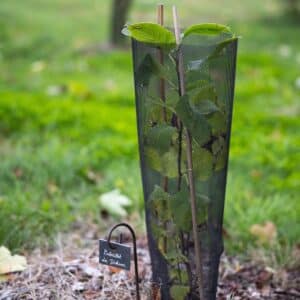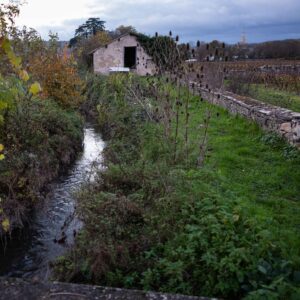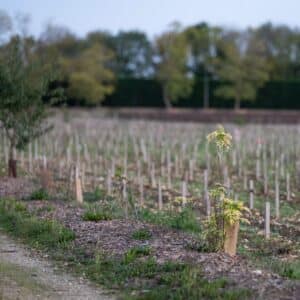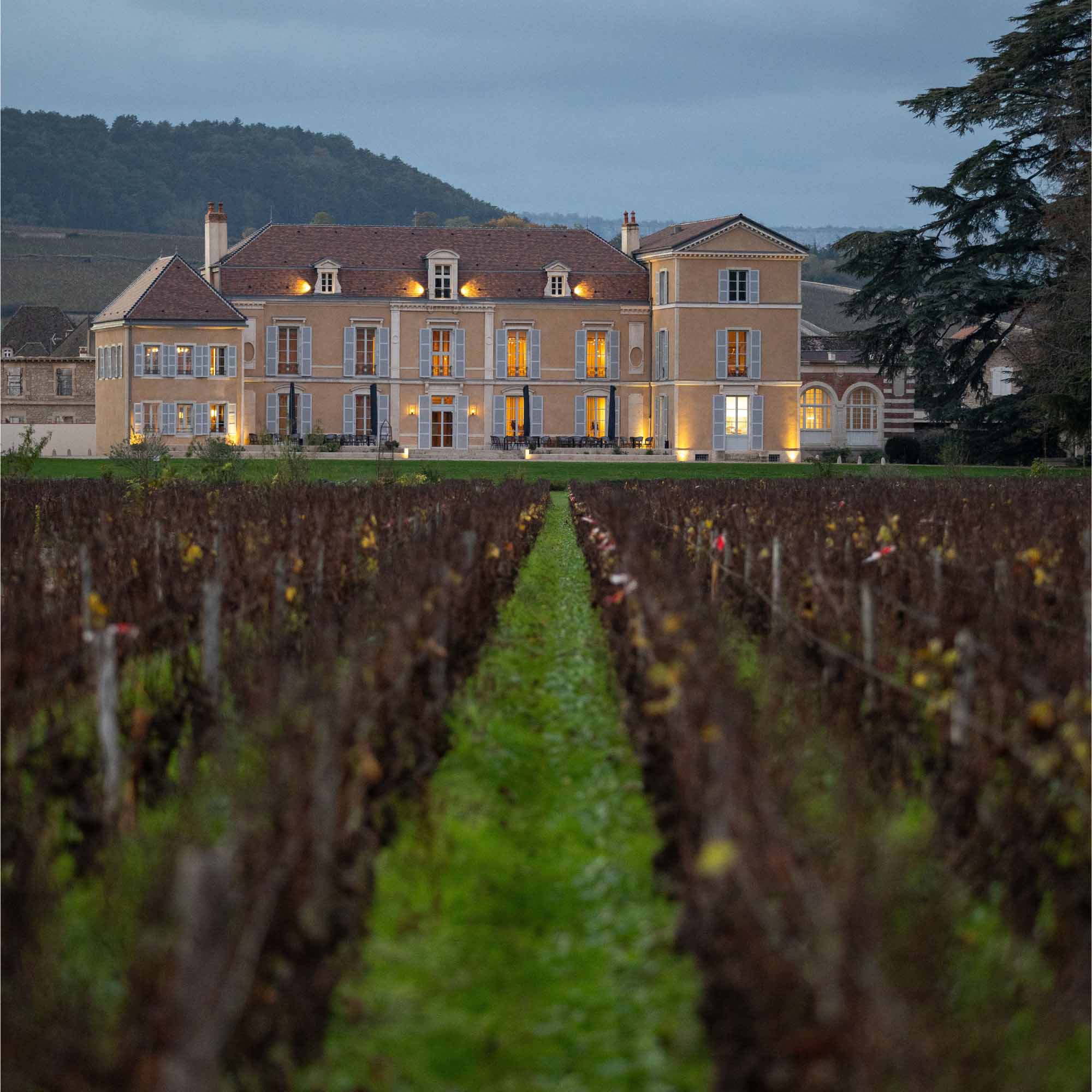Since its acquisition by Olivier Halley in 2012, Château de Meursault has established itself as a key player in Burgundy, with 67 hectares divided into a hundred or so parcels conducted in organic farming.
The transition began in 2017, with the aim of preserving both teams and nature by guaranteeing pesticide-free winemaking. The practice of Poussard pruning, the vine shoots crushing, and the soil preservation are actions that contribute to a more resilient viticulture.
In response to climate challenges, the gradual reduction of our bottle weight is a major factor in improving our carbon footprint, like our agroforestry project. In collaboration with the Forêt Gourmande Association, we have planted thousands of plant species in the park and along the river. This biodiversity corridor extends into the vine rows, where trees are now integrated in the vineyard to restore the original biotope.
Our eco-responsible approach also extends to our energy production: 10 wells 110 metres-deep provide low-level geothermal heating and cooling for the Château, while wood wool insulation reduces the Château’s energy impact. New wells are being dug for the future eco-designed winery.
We are evolving our projects by adopting this sustainable approach.





